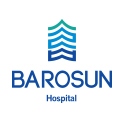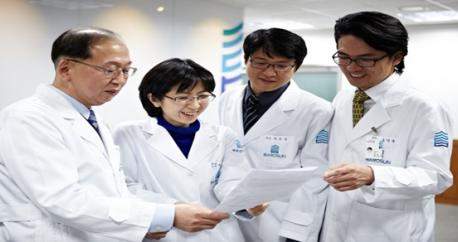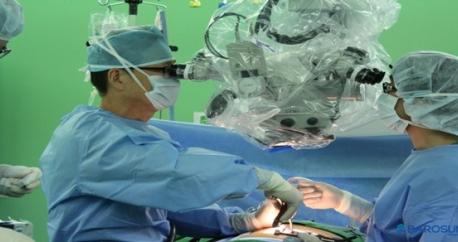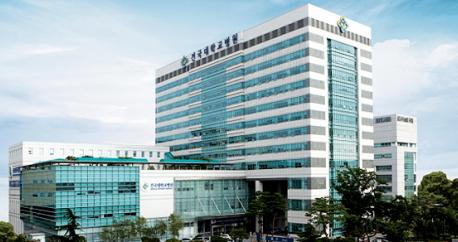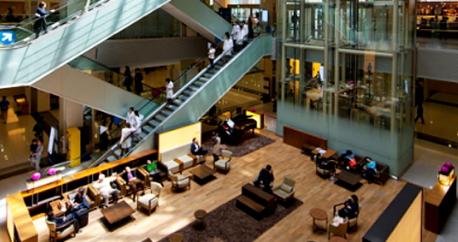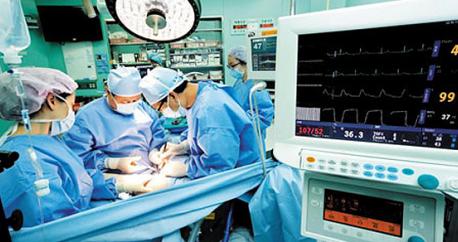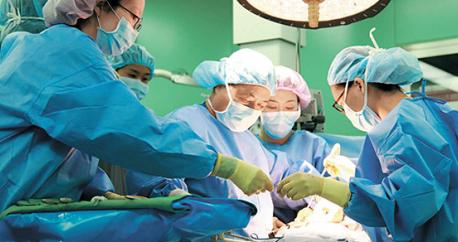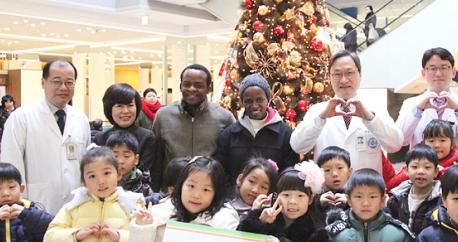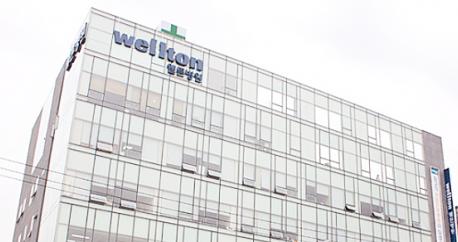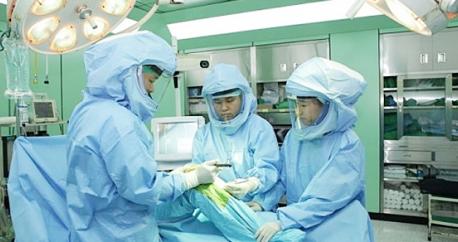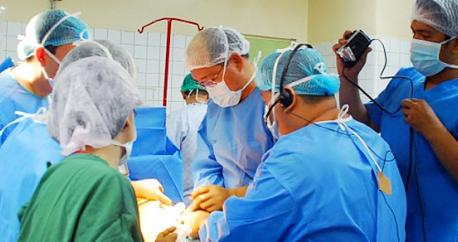Arthroscopy
Arthroscopy is the surgical procedure of piercing a 1cm hole in the joint to insert the joint endoscopy and arrange the damaged cartilage by observing the conditions of the joint through the monitor. However, this surgical procedure is impossible in the case where the cartilage has completely disappeared and therefore, must be substituted with the knee replacement surgery.
Indications
- Patients showing no improvements with drug and physical treatments
- Patients with ACL rupture, Meniscus Tear, Degenerative arthritis, gouty arthritis, Rheumatoid arthritis, tennis elbow/golf elbow, frozen shoulder, chondromalacia patella, impingement syndrome, ankle sprain
Method of Surgery
A thin endoscope of 4~5mm with a subminiature camera and laser is inserted to the shoulder, knee or the ankle joints to diagnose the joint damages or bone abrasions. This method makes it possible for precision treatments as it is enabled to diagnose even the symptoms that cannot be accurately found with CT or MRI results. There is less complications and almost no possibilities of I nfections after the surgery since it is performed with the minimal incision and barely any pain.
Autologous Chondrocyte Implantation
Autologous Chondrocyte Implantation is the surgical method of collecting healthy cartilage cells to incubate for a month period to implant the incubated cartilage cells to the damaged areas. The implanted cartilage cells are restored as healthy bone cartilage after 6~12 weeks and therefore, the patients are able to enjoy sports activities after 9 months.
Indications
- Patients with cartilage damage during sports activities
- Patients with Osteochondritis dissecans where the cartilage is separated
- Patients with degenerative arthritis
Method of Surgery
The Autologous Chondrocyte Implantation is processed in 2 phases. In the first phase, a hole of 5mm is placed to collect 200mg~300mg of normal cartilage through the arthroscope. Next, the cartilage cells are incubated for about a 1month before implanting onto the damaged cartilage. There is almost no side-effects since it is a cell treatment using the patient’s own cartilage cells and it is able to safely restore the damage cartilage. However, the patient must take notice to use crutches for a month to not place any weight on the treated area.
Total Joint Replacement
Total Joint Replacement is the surgical procedure of removing the joints of buttocks and knee, that no longer function to insert the artificial joints made with polyethylene. This surgery is not performed on patients in their initial and middle stages of joint disease and is performed on the healthy patients around the age of 65 years.
Indications
- Patients with degenerative arthritis
- Patients with rheumarthritis
- Patients with traumatic arthritis
- Patients with osteonecrosis
Method of Surgery
The Total Joint Replacement cuts out the non-functioning joints covering the end of the bones in the thickness of 8~9mm to insert the artificial joints safely made from metal and plastic(polyethylene) materials. This surgery not only reduces the pain but also restores the joint’s functions to enable the normal life activities including usage of arms and legs.
KMH Recommended Tips
- 1. Patients should conduct knee joint exercises to help muscle strengthening such as swimming, aquarobics, indoor-cycling and walking.
- 2. Patients must avoid exercises that move the particular joint areas for long periods of time.
- 3. Patients must avoid lifting heavy objects(over 10kg).
- 4. Patients must maintain appropriate weight to reduce adding pressure to the joints.
- 5. In cases of knee joint surgery, the patients are recommended to use chairs when working and to use toilets when using the bathroom.
- 6. Patients must receive regular examinations 6 months and 1 year after the surgery and annually afterwards.
